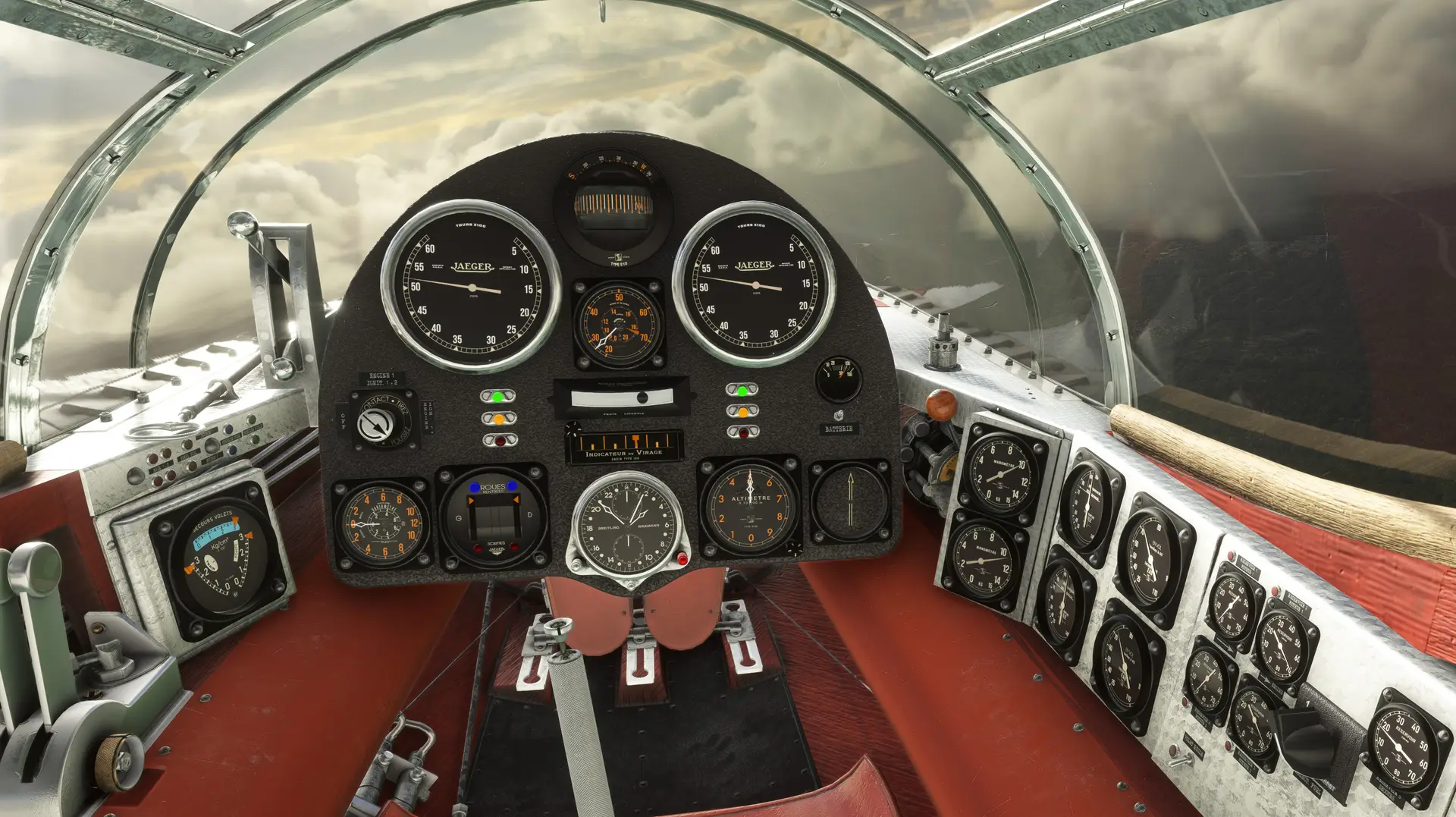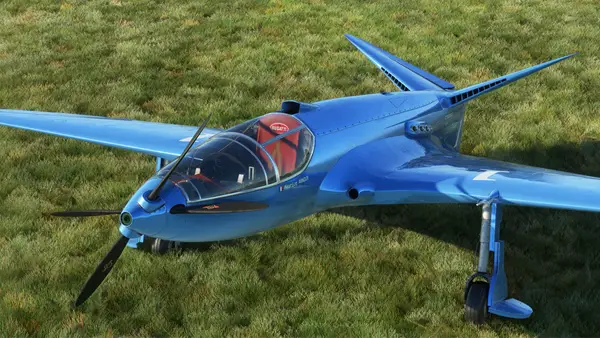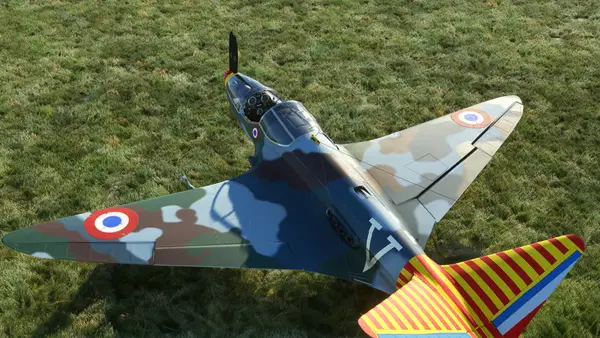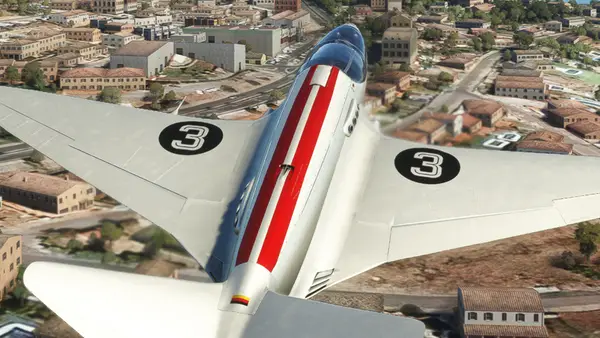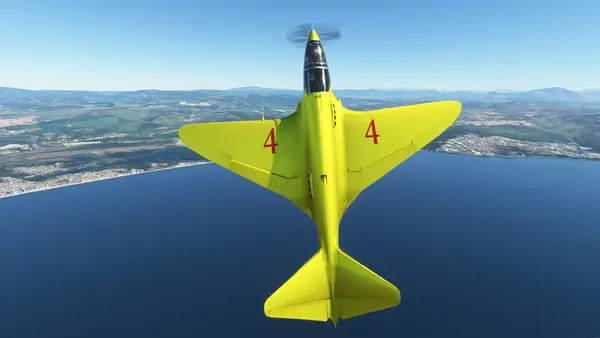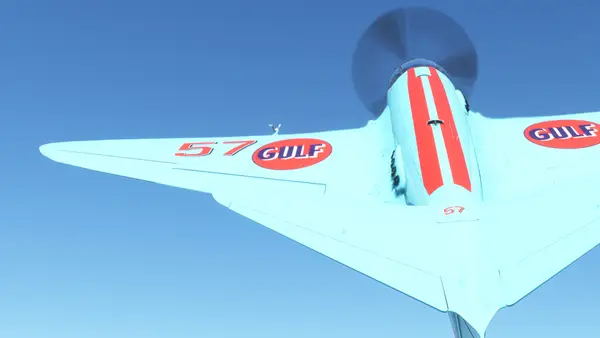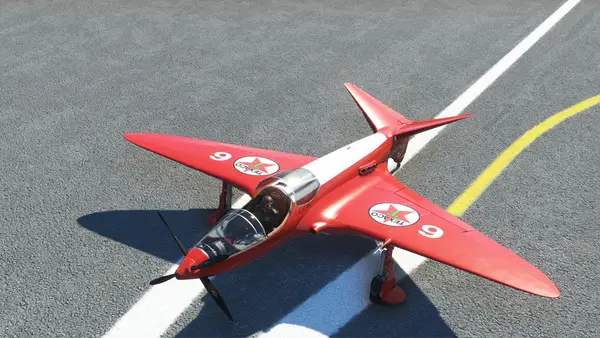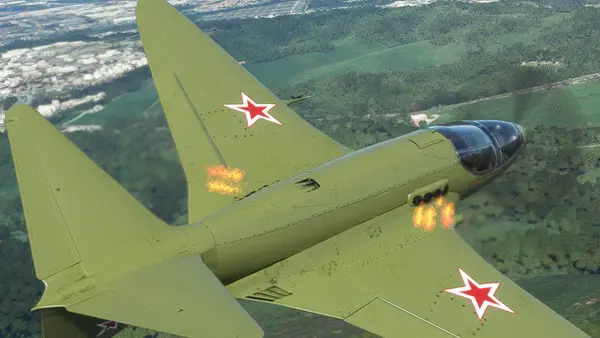The EB 100P is a twin-engine, single-seat, high-performance racing monoplane developed in the late 1930s by Italian-born automobile innovator and industrialist Ettore Bugatti and his chief engineer Louis de Monge. Bugatti, who became a French citizen in the 1920s, conceived the aircraft to compete in the Coupe Deutsch de la Meurthe, a French international air racing event. He sought to win the competition and set a new record in the 3-kilometer landplane speed event.
The 100P evolved into one of the most innovative and visually striking aircraft in the history of aviation. It features a bullet-shaped fuselage, a low-mounted, forward-swept main wing, and an empennage composed of a 120-degree V-tail with a single ventral fin. The aircraft has a standard undercarriage with retractable main landing gear and a tail skid that retracts into the ventral fin.
The aircraft is powered by two modified Bugatti Type 50B inline 8-cylinder engines that each produce up to 550 horsepower. These are based on the engines that powered the Bugatti Grand Prix racing automobiles. The engines are arranged behind the pilot, one on either side of the aircraft, each with a driveshaft connected to the aircraft’s propeller assembly. The propeller assembly comprises two contra-rotating 2-blade propellers. The engines are cooled through an innovative venting system using air inlets on the tail section of the airplane. This system requires no exposed radiator, greatly reducing parasite drag, hence increasing maximum speed.
The EB 100P is constructed of lightweight materials, including balsa wood, a variety of hardwoods, and doped fabric. One of the most notable innovations of the aircraft is its automatic flap system. The flaps have upper and lower surfaces that move independently of each other and deploy automatically depending on airspeed and engine output (measured by manifold pressure).
Bugatti and de Monge built only one model of the 100P. Completed in September of 1939, it never flew; the aircraft was secreted out of Paris in June of 1940 as the Germans advanced on the city. A replica took flight in 2015, but tragically crashed on its third time aloft a year later, killing the pilot.
The EB 100P measures 25 feet, 5 inches in length, stands 7 feet, 4 inches tall, and has a wingspan of 27 feet. Although it never flew, it theoretically could reach a maximum speed of 500 miles per hour. Had it raced in the Coupe Deutsch de la Meurthe, it would certainly have won, and set a new air speed record, by a wide margin.
